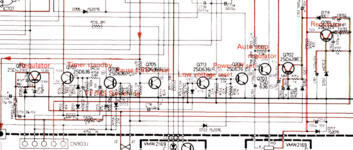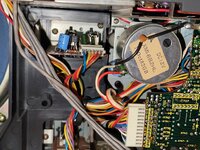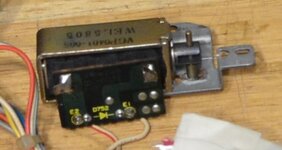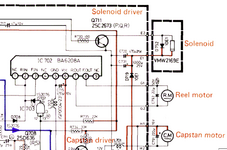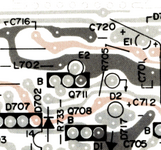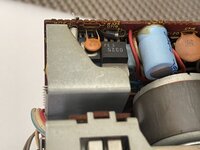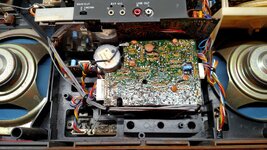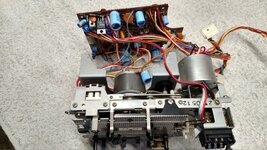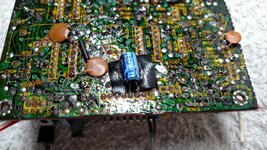My JVC M90 was all working fine after replacing one fusible resistor.
That fusible resistor can be seen at the top edge of the mechanical control board PCB.
A few days ago, I just brought out and when powered on it was not resetting with the clicking sound. I knew there is some problem with it.
It was not playing cassette, and the deck seemed nonfunctional.
Radio works well with no problem. So, I wanted to check if that fusible resistor again went bad and found that it was all fine.
Later, caution advised me to check all the other fusible resistors on the Mechanical Control Board and they all looked good.
The connector CN 903 pins on the mechanical control board were checked for DC voltage
See the third diagram where CN 903 pins are marked with yellow dots, green dots ending with yellow dot.
Let us mark it 1 to 5 from top yellow to bottom yellow.
Pin#3 -17.31V, pin# 4-16.58V and pin #5 -0.00V. There is no voltage on the #5 pin.
Eric wanted me to check the power supply and found another fusible resistor FR 901 (2.2 ohms) with no continuity.
Diode 905 was all fine along with all other diodes on the power supply.
Today, I replaced FR 901 (2.2 ohms) and when powered on, the deck was not cycling and resetting.
Deck has all new belts.
I was wondering why the deck is not resetting and functioning like it should!
Any help to solve this deck problem is greatly appreciated.
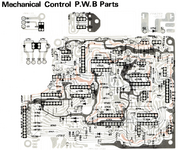
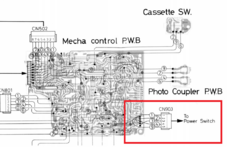
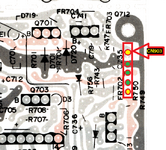
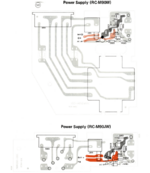
That fusible resistor can be seen at the top edge of the mechanical control board PCB.
A few days ago, I just brought out and when powered on it was not resetting with the clicking sound. I knew there is some problem with it.
It was not playing cassette, and the deck seemed nonfunctional.
Radio works well with no problem. So, I wanted to check if that fusible resistor again went bad and found that it was all fine.
Later, caution advised me to check all the other fusible resistors on the Mechanical Control Board and they all looked good.
The connector CN 903 pins on the mechanical control board were checked for DC voltage
See the third diagram where CN 903 pins are marked with yellow dots, green dots ending with yellow dot.
Let us mark it 1 to 5 from top yellow to bottom yellow.
Pin#3 -17.31V, pin# 4-16.58V and pin #5 -0.00V. There is no voltage on the #5 pin.
Eric wanted me to check the power supply and found another fusible resistor FR 901 (2.2 ohms) with no continuity.
Diode 905 was all fine along with all other diodes on the power supply.
Today, I replaced FR 901 (2.2 ohms) and when powered on, the deck was not cycling and resetting.
Deck has all new belts.
I was wondering why the deck is not resetting and functioning like it should!
Any help to solve this deck problem is greatly appreciated.




Last edited:


